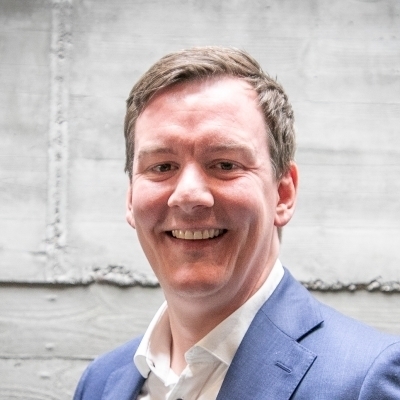
Insights & Opinions
Fintech Partnerships: Lessons Learned from Minna Technologies and ING
Tue, 13 Oct 2020

We know: partnerships can be challenging. Not every collaboration will thrive a bank to the next level, and it is essential to choose wisely. The sooner you’re capable of detecting the right partners, the better. It is cheaper, it gives more energy to the organisation, and it ends up more fruitful for your banks’ long-term strategy.
In short, this was essentially what I learned from the Afterwork session on October 8 with Minna Technologies and ING, where we discussed “The Role of Fintech Partnerships in the Evolution of a Bank’s Strategy”.
The perfect match to pimp up the new mobile banking app
Minna Technologies is a fintech that enables banks to help their customers in managing their subscriptions better.
Joakim (Sjöblom, CEO of Minna Technologies): “We witnessed in 2013 already the global trend to the subscription economy: bank customers are changing their consumption behaviour. Customers today subscribe to solutions instead of buying products, not only for music but also for cards, smartphones, travel… we can subscribe to basically everything.”

Essentially, their value proposition is to bring clarity and transparency in the subscriptions of a consumer. Moreover, they help the consumer with their subscription management through seamless cancelling or switching to another provider if that would be beneficial. Joakim: “We help customers to save time and money and increase the convenience of ING customers [with their subscriptions] while providing a positive business case for the bank.”
The company started talking to ING in 2017, with incubation in Fintech Village of ING Belgium a little later, where they met Abhishek (Khurana, Product Area Lead, Omnichannel Experience at ING). Abhishek was working on uniting the Dutch and Belgian ING platform, including a new app.
Abhishek: “Changing the app and website creates friction and negative feedback. Back then, we knew that by October 2020, there would be a new app. Because it is radically different, and different can be perceived bad, we needed a sweetener as a compelling feature for Belgian clients.”
Fintech partnerships: essential to every bank’s strategy?
Banks are increasingly more open to partnerships, although many remain sceptical. Today banks understand that sometimes it is better to partner up instead of losing months to train their employees for new skills.
The question of the day was how essential these fintech strategies are for a bank’s long-term strategy, and if it is crucial, how to improve the process to partner with third parties.
We asked the audience their opinion on this question, and the answer to this question was mixed. 44% of the audience arguing that it is essential for any bank, and another 40% stating that it depends on a bank’s positioning in the market.
Abhishek believes that it depends on a bank’s positioning. For some banks, it will be more critical than others, and also the reasoning behind partnerships can be completely different. Challengers will look for more features to differentiate themselves. Partnerships can provide this at a much faster pace than when developing these features in-house.
Looking at market leaders, like ING in Belgium and the Netherlands, the key reason to partner up is not so much the need to have as many features at the lowest cost, but because of what he calls the “resource allocation problem”.
Big banks with huge volumes are especially vulnerable for the resource allocation problem. The idea is that big banks have priority lists for change requests. Each change has a business case attached. This will determine which improvement or innovation to implement. The best business cases are very often the small improvements that impact many customers.
Abhishek: “It is money in the pocket. Image a considerable improvement in the mortgage loan process. How many times does a consumer buy a new house? Indeed, as a bank, you are solving a small problem for a given customer, whereas a feature like transaction categorisation would impact an individual a lot more, but the take-up may be lower.”
The iteration of resource allocation will happen over and over again because of limited resources. This vicious circle made ING decide to start partnering with external providers. Their USP, their strength is to solve big problems for a smaller number of customers.
Abhishek: “Hardly any customer changes a bank because of key features, but the moment a customer does change, the features are important and sometimes essential for a customer in his decision process.”
Along came COVID-19
With COVID-19, banks faced new challenges that required the necessary resources. With new risks measures and operational resiliency improvements climbing the ladder of priorities, the budgets for better customer experience and new features are being squeezed even more.
So much for the resource allocation problem. There is more though: as banks increase their provisioning to anticipate defaults in their lending activities, they need to improve their top line. So the focus of banks today is the search for revenue-generating features.
Abhishek: “I’ve spoken to a lot of fintechs, and the pitch was usually around NPS, on engagement and retention. Frankly, if I take it to my board nowadays, I see eyes rolling if those are the only things you can deliver with a partnership.”
Joakim: “If you don’t manage to make a cash flow impact, whether that is top line or preferably even bottom line, it is not going to be a sustainable partnership. For that reason, we [Minna Technologies] want to provide a hard dollar impact for our customers and the community, the end-users.”
The challenge of a start-up = the opportunity of a scaleup
Banks are more open to partnerships today, and they matured in the way they connect with fintechs. Aleksander (Tchernov, Regional Director Benelux of Minna Technologies): “I’ve spoken to many banks with a negative experience of collaborating with, or trying to establish a collaboration with a fintech where at a certain point, once compliance or procurement comes in, a fintech gets disqualified because they don’t have their things in order”.
Some indicators can predict upfront whether a partnership has a chance to succeed, according to Aleksander, who believes that early detection of potential hurdles is a crucial step ahead of a partnership. It saves time and keeps focus on the right partnerships. Based on Minna’s experience in working with banks, they developed a list of high-level indicators on the fintech and its solution to detect upfront, whether it is mature enough to collaborate with a bank.
Not just banks, but also fintechs should consider being more selective in whom they partner with, for obvious reasons. Joakim: “If a bank would have a sunk cost of 6–9 months in a failed project, it is more of less OK because it is fixed in the financials of a major corporation. If we waste 9 months, it can be a do or die. We need to have a really high level of scrutiny with whom do we work with, and I would say that we learned this the hard way.”
Today, even more than yesterday, start-ups struggle to convince banks in partnering with them (see also our “How a virus changed the relationship between fintechs and banks”). In uncertain times, banks want to limit all uncertainties they can impact. A limited financial horizon, or a small team, an indication of lower operational stability can be a real dealbreaker in the respect.
Scaleups are more attractive. Abhishek: “The fact that Minna was already live in a Swedish bank, that they were a registered PSD2 AISP, were very important considerations for us. It meant that the due diligence we had to do was reduced and there was more confidence so that we were able to get it through.”
Being live at other banks does say something about their IT capabilities, the future of the company and their vision. An additional important decision criterium was the focus of Minna Technologies: they focus on subscription management, and only that; it is not just an extra feature on top of something else.
What makes a partnership successful?
There are 3 important parameters to keep in mind in a successful partnership, according to our guests:
- good communication
- proper expectation management
- superior account and relationship management
The first reality check is during the vendor process, where fintech companies are often caught by surprise with the complicated procedures and administration. After convincing business or IT, they suddenly hit the wall of compliance, security and risk management.
Fintechs that understand the reasoning behind this complexity, the ones that stay calm and adhere, have a high chance to succeed. Alignment and a better understanding is the outcome of a successful vendor process. Both parties get a complete picture of each other, and they build the necessary buy-in in the entire organisation of a bank.
Equally, it helps the fintech to understand what kind of organisation they are dealing with. Both parties slightly move from a friendship to a wedding. Before getting there, they discover whether a wedding makes sense, for BOTH ends, so they talk and talk, and they make sure you know the expectations from both ends. On top of that, they figure out whether these expectations, the commitments, can be met.
Joakim: “Innovation Theatre is a thing between banks. Several banks look like front runners. It has almost a stock value impact, a sign to make sure they have a future. Behind the scenes, there is no decision making, a lack of budget, a lack of processes and governance to work with third parties. Some policies directly block this kind of partnerships, and you need to verify that upfront.
We have what we call a T-shaped funnel with a long checklist that we execute before engaging with banks.”
Once you get past the vendor process, you must ensure a proper implementation: you fulfil the expectations. What’s interesting with Minna, is that they believe that even if you successfully release your product, you haven’t done 50% of the work yet.
Don’t leave it with integration, but make sure you have a clear governance process on both sides to make the integration into realised value.
Joakim: “We are very dedicated to what we call a king-pin strategy. If you look at all our customers, from Lloyds to ING, to Swedbank and Danske Bank, you see that it is either the biggest or second-biggest bank in their market.
If you’re running this kind of complex software deliveries, you will not deliver off the shelf products: it will have some level of customisation, adaptations and most importantly: some form of uniqueness and positioning that will benefit the bank.”
Is it a coincidence that one of their shareholders is Visa, one of those companies that genuinely excels in account management? Abhishek: “The one thing that Visa and Mastercard do exceptionally well is relationship management. I couldn’t get rid of the account managers [in a previous career] in such projects, even if I wanted to basically. They would be there knocking on my door every month, and that is because of the way they work. The contracts they offer include the possibility to claim back part of the money of a project through support in marketing campaigns or other activities.
They would constantly come with ideas on what you can do for your campaigns that essentially help you achieve your objectives.”
Conclusion
Scarcity of resources and time is changing the priorities of organisations today, big and small. That explains why fintech-bank partnerships are so important for a bank’s strategy: working together can save time. On the other hand, exactly this scarcity also explains why both banks and fintech should be more selective in the partners they choose.
That is for me one of the key lessons here. Communication is not just about getting to know each other, but also a way to get an idea if a partnership makes sense, and to get this idea early stage. That is the only way to succeed in challenging times like these, in my opinion.